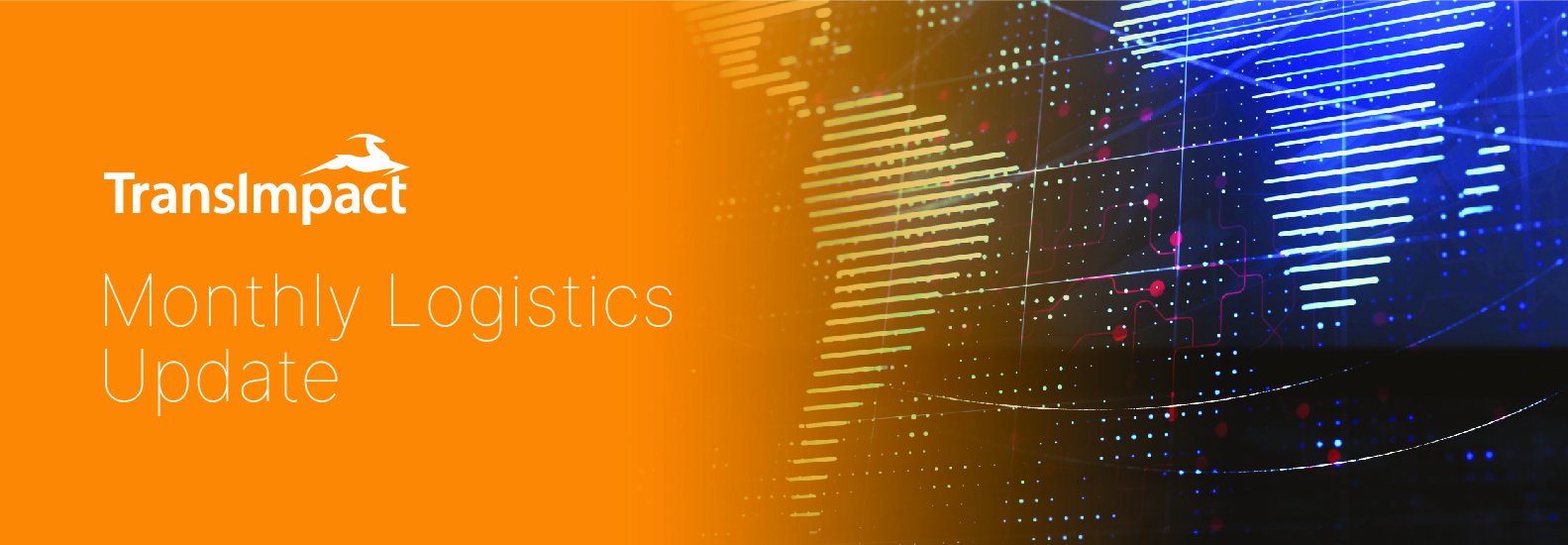The following is a market summary update by the TransImpact Managed Logistics Team.
Overall
The market will remain carrier-favored throughout 2022, and buying/negotiating power will remain limited. LTL carriers will be selective in their new bid responses and will be looking to trim unprofitable freight and business out of their networks where possible. This will, in turn, increase demand in the FTL and partial markets as they work with limited assets and drivers to cover the additional loads coming from LTL. Driver and truck shortages are expected to last through the year, with flatbed getting hit the hardest until the housing market turns around. It’s possible that upcoming interest rate increases will reduce housing demand, but transportation likely will not feel those effects until Q4 2022 or 2023. Rates will retain upward pressure in all modes as we enter 2022 — it is yet to be determined if they will stabilize at their elevated levels in early Q2 or continue their upward trend. LTL rate increases in 2022 should be similar to 2021, with the majority falling between 5% and 8%.
LTL
Overall tightening of the market eased during Q4, and many carriers are opening their doors to new business again (looking at you, Southeastern Freight), albeit with increased scrutiny and restrictions. As predicted in October, the industry has followed Old Dominion’s lead and made significant efforts to purge overlength freight from all networks via implementing new overlength fee schedules starting at 8’. Yellow is moving forward with unification of its OpCos, and Central Freight has shut down, providing many opportunities for other carriers (Estes, FedEx, and XPO) to pick up additional resources from the ashes of one of the oldest truck lines around. While it could be concluded that capacity within the Southern U.S. footprint of the fallen giant would tighten, the resources being picked up by the more profitable and sustainable companies will increase the overall performance and availability of service in that area after an initial period of instability. Expect a new industry service/performance dynamic in the Southern U.S. by the end of Q2 2022.
Van & Reefer
Aggregate market indices have remained tight throughout Q4 and this will continue well into 2022. The capacity constraints on the market are not expected to ease until the production of new Class 8 units and equipment can meet the unprecedented demand levels — these production rates are still hamstrung by raw material supply constraints that began early 2020. Van and reefer rejection rates continue to spike in the Northwestern U.S. This was expected in December as the outbound produce and Christmas tree market was at peak, but it will remain high moving into 2022 as the continuing record port congestion levels leave a lasting impact on all modes of transportation. The LTL market’s purging of overlength freight will also flood the pooled distribution and TL markets with these articles, which will constrict capacity even more as manufacturers struggle to find new ways to move this freight.
Flatbed
The flatbed market moving into 2022 is expected to tighten further, as manufacturing and industrial production is up 5.2% YoY. Capital goods growth rates indicate even further growth into next year. This industrial growth combined with the demand for new housing construction is expected to keep flatbed tender rejections — along with overall flatbed rates — high well into Q2–Q3 2022.
Intermodal
The containerized ocean market experienced historically high volume and rates in 2021. This is showing no signs of slowing down. Unfortunately, the large spike in U.S. Import volumes will only exacerbate the port congestion issues. Moving into Q1 2022, we already see daily inbound TEU volumes at their highest recorded levels above all of 2021. While this import spike is not expected to last through 2022, the upward pressure on an already strained network will create further ripples throughout 2022 and likely into 2023 in the form of continued upward pressure on contracted and spot container rates alike.
However, it is also worth noting that this surge in import volumes could be a calculated move to get out ahead of the early Chinese New Year (Feb. 2022). If during this holiday we see a large drop in inbound volume, then we could see these effects alleviated and the opposite scenario occur, where there is finally some easing of container rates and we can recover some of the ground lost during 2021.


